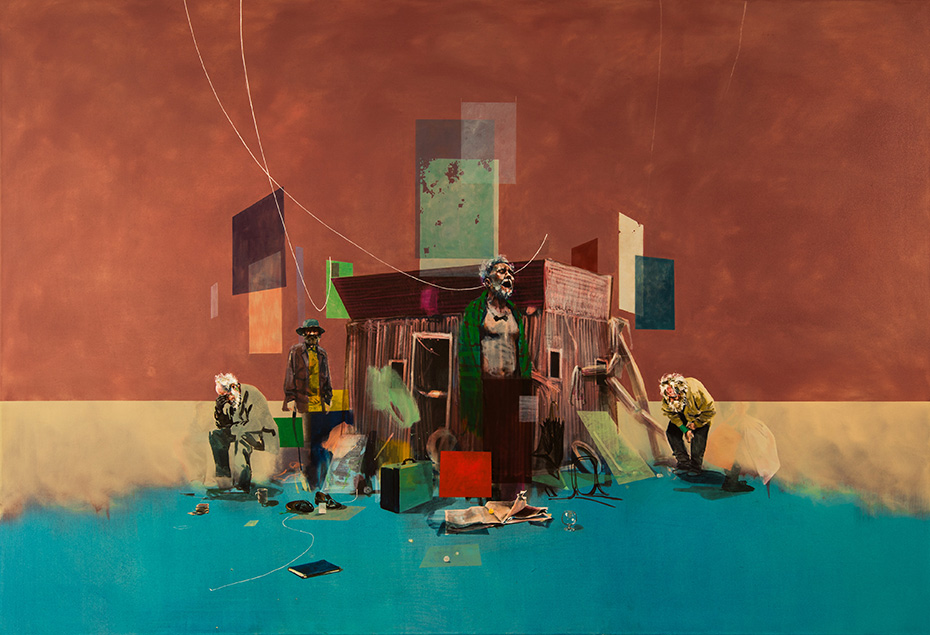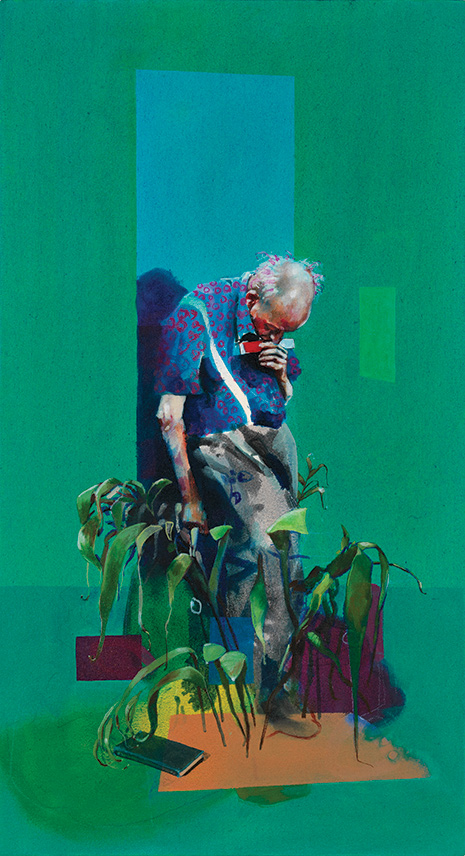Arranged and managed by Isis Phoenix Arts. Media article by Port Magazine – thank you!
@isisphoenixarts
The artist ruminates on his fascination with T.S. Eliot’s most celebrated poem, and how it’s inspired his latest body of paintings

The Waste Land is a poem that I will never fully understand.
T.S. Eliot’s poem is the main drive behind my recent paintings, and the title for my current exhibition is a candid theft of one of the most striking lines – A Heap of Broken Images.
That title seems a brilliant description of this poem as a whole. It leads you into a situation or narrative, which abruptly stops in the middle, and jumps into another, each one drenched with references and connotations in multiple languages, but all tied into a strict economy of language.
The poem is dedicated to Ezra Pound, a contemporary poet and close friend of T.S. Eliot, and the opening of the poem pronounces,”Il Migglior Fabbro”, the better craftsman. It was Ezra Pound who was sent the draft, and cut it into pieces to shorten the poem even further, removing large chunks of each situation, to create a greater depth of perplexity for each reader, and leaving more lines untied. “A Heap of Broken Images” also falls as a perfect explanation of Pound’s editing, where the fragmenting of these already complex lines seem his key intention.
This is a wonderful challenge as a painter, and one that has kept this set of paintings changing every day as I study further. On the train to the studio, I might read a commentary on this poem that flips my perception of a word or stanza on its head.
This perhaps changes every colour in that painting, suggests a link to another, and quite often means it is painted out and started again, with only hints of that first reaction left to be seen.
‘Haunted’, for example, began as a brazen magenta painting, but layer after layer of new colours, images and figures meant that the atmosphere of that painting changed every other day, as new decisions were made. A photograph of England manager Roy Hodgson, found in the London Evening Standard in February/March, decided the figure and composition, but several heads or faces were painted on top of his as the painting changed.
Whilst I am no expert, with no credibility whatsoever on T.S. Eliot’s poetry, there is a basic reaction that means I will ask questions of this poem instead of just putting it aside. Both of my parents are English teachers, and I think that must give me some confidence (if only to have a reliable opinion to fall back on). My mother’s degree dissertation was a study of ‘The Waste Land’, and my father has always taken consolation in Eliot’s late poems – ‘Four Quartets’. I picked up that baton by writing my own dissertation at Wimbledon College of Art – ‘Ut Pictura Poesis’– discussing the relationship between contemporary painting and imagist poetry. Rebecca Beasley explains, “The thinking of Eliot, Hulme and Pound is largely responsible for shaping the modernism we have inherited”.
It seems his poetry provides those half-finished, frugal stories that I hope my paintings can translate. Those scribbled, first attempts of the old and newer masters are always so exciting, full of energy, and the mistakes and accidents make each one so accessible, to feel like you might be in the studio with Rembrandt instead of feeling reliant on art history in the Rijksmuseum.
I hope each one of mine leaves a gap to be filled, feeling unfinished, abstracted or even just messy. I am tempting the viewer to engage with that painting; trying to decipher it or make their own decision on what might be missing.
It is that which most intrigues me about ‘The Waste Land’, my attempt to untangle it, and impose my own opinion on each word or line. My paintings swing from quite a simple illustration of a character or scene, to a tenuous link to one of Eliot’s references, and that is why I love ‘The Waste Land’.

A Heap of Broken Images is being exhibited at the Fine Art Society, London 24 June – 29 August
Article from PORT Magazine, July 8th 2014: https://www.port-magazine.com/commentary/why-i-love-the-waste-land-bartholomew-beal/